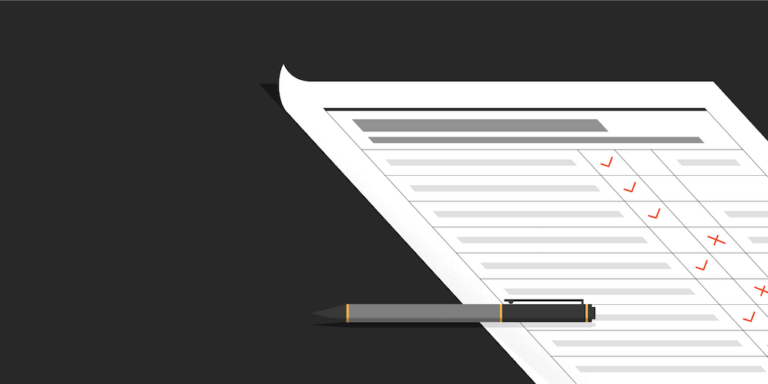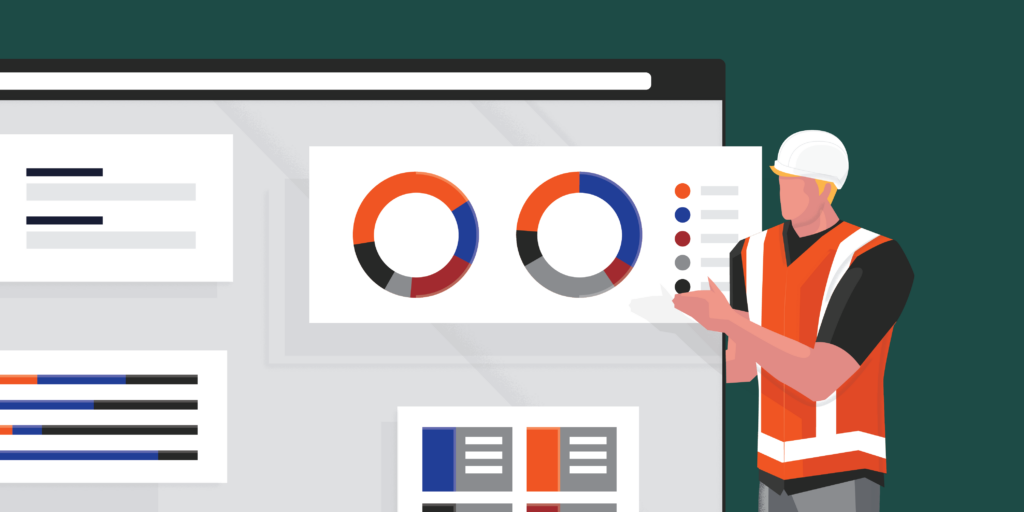— 8 min read
Punch Lists 101: A Guide to Correcting Deficiencies Before Closeout
Last Updated Jan 23, 2025
Last Updated Jan 23, 2025

In construction project management, punch lists are a common practice to help ensure that all the project items match specifications and contract requirements. Before final closeout, contractors add all work that does not conform to the specifications in the construction contract to the punch list. Items on a punch list typically include minor corrections, alterations, or repairs that are required before the release of final payment.
Understanding punch lists is important for ensuring work is completed to specification — as well as getting paid for that work. Keep reading to learn what punch lists are used for and what to include in one.
Table of contents
What is a punch list?
A punch list, also called a deficiency list, is an itemized checklist of outstanding deficiencies needing attention before project closeout and handover. A construction punch list includes any work that was not completed according to specifications or any items that need correction, such as incorrect installs or improper building functionality.
Punch list items are usually smaller fixes because larger issues typically come with urgency and have already been addressed through a change order.
Here are a few examples of common punch list items:
- Repair broken window
- Replace chipped baseboards
- Touch up paint on ceilings
- Replace the cracked bathroom mirror
- Clear out debris in the back patio
As you can see, a punch list is comprised of small, lingering to-dos that need attention before a construction final walkthrough—or, what is sometimes referred to as a "punch out." With this in mind, every project manager's goal is to achieve a "zero punch list" before the final walk-through takes place.
Punch List Responsibilities
No one person can be solely responsible for ensuring all items are crossed or "punched" off the punch list—that would be overwhelming. There are multiple key stakeholders involved in the punch list process, including owners, general contractors, subcontractors, and architects.
Owner
The owner's main responsibility is to be present towards the end of the project and inspect the work. As the project approaches completion, the owner should visit the job site to survey what has been done. This is a good time for the owner to inspect work, ask questions, and provide any direction or final requests. These items make their way onto the punch list.
General contractor
The general contractor has many roles in the punch list process. Because they act as a liaison between the owner, subcontractors, and architect, they are central to the entire process. Their responsibilities include:
- Populating the owner's requests and comments into the punch list
- Examining items remaining and adding any additional items necessary to the punch list
- Allocating remaining tasks and responsibilities to subcontractors
- Determining a realistic project completion date based on the punch list, and communicating that information to all stakeholders involved
- Ensure punch list completion before the final construction walk-through
Subcontractors
Subcontractors will receive a list of tasks from the general contractor and need to address each task by the time requested. Subcontractors should also be prepared to answer any questions when it comes to these line items.
For example, if a subcontractor is assigned to repair pavement cracks, the owner or general contractor may ask how the repair was done. There may also be some cases where the subcontractor doesn't complete a task to the exact specifications on the punch list. This might be because the request wasn't viable and they used expertise and best judgment to get the job done in the most effective way possible. In these cases, the subcontractor should be prepared to articulate how and why.
Architect
During the final construction walkthrough, the architect is needed to confirm that what was designed was actually built. Before the final walkthrough, architects are also responsible for approving any changes in construction design that were necessary, and this needs to be accounted for during the final walkthrough.
Examples of Punch Work
A punch list will typically include a variety of items to test, add, fix, or remove – the items on the list are called “punch work” or “punch out work.” Punch list items will vary widely depending on the type of project. Punch work on an industrial or infrastructure project will look very different from that of a residential or retail project.
Items to test
Testing is done to verify that all installed work, materials, and equipment function as expected. Punch work often includes testing of:
- Appliances
- Equipment
- Doors & windows
- Plumbing fixtures
- Mechanical elements
- Communication systems
- HVAC systems
- Etc.
Items to add
Punch work frequently includes items that were left off, whether intentionally or not. This includes items like:
- Light covers
- Hardware
- Paint touch-ups
- Coating/sealant
- Etc.
Items to fix
While contractors and equipment remain on the jobsite, there is always the risk of damage to materials, equipment, or systems that needs to be corrected. Punch work can include fixing:
- Leaks
- Damaged materials
- Improper installation
- Cracks
- Defective equipment
- Etc.
Items to remove
Any items, equipment, or materials not included in the project delivery need to be removed before handover. A punch list often includes the removal of items such as:
- Trash
- Equipment
- Extra materials
- Tools
- Protective covers
- Etc.
5 Ways to Improve the Punch List Process
Punch lists are fundamental to any construction project. While a simple list on a piece of paper or an Excel spreadsheet can suffice, large projects can have extensive punch list items that can get lost on paper or in excel. There are ways to make the punch list process easier on you and for everyone involved.
Document as you go.
Although it can be tempting to put off creating a punch list until the very end, your team can work more efficiently if you begin creating your punch list earlier on. By implementing a punch list from the start, you also set a tone for standards and workflow for everyone involved on the job. Documenting as you go is known as a "rolling punch list" or "punch-as-you-go" method. It involves a little more work upfront with consistent check-ins on work duties and progress, but it pays off dividends in the end.
Assign tasks to the appropriate person.
Sometimes items get added to a punch list in a flurry. Everyone knows that it needs to get done ASAP, but they don't know who is responsible for it. No matter how big or small the task is, each item on a punch list needs to be assigned to a specific person. If it's a task that involves multiple people, make sure to assign clear roles. For example, if three subcontractors are assigned to a task, is there someone who should be taking the lead and ownership of the task? Roles and responsibilities should always be clearly spelled out, as you can never just assume that everyone is on the same page. Accountability is critical.
Be clear on your asks.
We discussed assigning tasks to the right person but once those tasks are assigned, are you sure they completely understand the nature of the ask? The more descriptive and thorough a punch list is, the smoother everything flows. For instance, does the person you assigned several tasks to know when each task needs to be complete? Do they understand which tasks take priority over others? This is where it can be helpful to have a premade punch list template you can fill in. That way, you know you're covering all of your bases and being as thorough as possible. The more information you extend, the more likely your project will end in success.
Use images to document issues.
Does everyone know which bedroom you mean by the "back bedroom?" Are the chips or stains called out in the punch list recognizable to all? Sometimes, even as we do our best to describe something, it won't always click right away. Or, someone might not have the eagle-eye that you have and not understand the issue at hand. This is where images can help quickly communicate the what, how, where, and why of what needs to be resolved—and cut down on confusion. Additionally, having photos provides your team with receipts of what issues actually existed and what was done to resolve those issues. This can help prevent you from having to redo work and can also help justify why things were done the way they were.
Optimize the process with software.
While pen and paper can get the job done, it only ends up adding extra work and stress to your plate. Pen and paper make it hard to keep track of all the moving parts involved in a punch list, and it makes it difficult to provide real-time updates to key stakeholders involved in the project. Even an Excel spreadsheet falls short of the other options that are out there now.
Cloud-based construction punch list software keeps everyone informed and accountable at all times.
Punch list software makes the final walkthrough a breeze.
Procore's construction punch list software allows you to keep a clear list of punch list items, assign responsibilities, track status, and more. With a simple, intuitive interface and pre-loaded punch list templates, you can generate and update punch lists with minimal effort. Since our punch list software is mobile friendly, you can take your punch list with you on the jobsite, where you can assign tasks, take photos, and document issues directly in the field.
Categories:
Tags:
Written by
Harshil Gupta
24 articles
Harshil Gupta is a Product Marketing Manager at Procore. Backed by a stint in engineering and rich experience in growth and product marketing, he's enthusiastic about the role of technology in elevating and enabling other industries. He lives in Toronto.
View profileAlex Benarroche
26 articles
Alex Benarroche serves as Associate Counsel for Procore. His legal expertise includes construction, contracts, business, and intellectual property. Alex is bilingual in English and Spanish. He earned a J.D. from Loyola University College of Law and an M.S. in Intellectual Property and Internet Law from the University of Alicante in Spain. Originally from South Florida, Alex has called New Orleans home since 2003.
View profileExplore more helpful resources

Equipped for Success: The Risks and Rewards of Construction Equipment
Even before written language, humans used tools to build. Contractors couldn’t have built the amazing feats seen and used in everyday life without machinery. From handheld tools to multi-storey tower...

The Percentage of Completion Method Explained
Accounting for income and expenses can present a real challenge for contractors, especially on long-term projects. The percentage of completion method is one of the most common methods of accounting...

What Is a General Contractor?
In the construction industry, a general contractor is the person or company responsible for overseeing a construction project. Property owners will typically hire general contractors to ensure a construction job...

MasterFormat: The Definitive Guide to CSI Divisions in Construction
Often referred to as the “Dewey Decimal System” of construction, the Construction Specifications Institute (CSI) MasterFormat is the industry standard in North America for organizing construction specifications. This system enables...